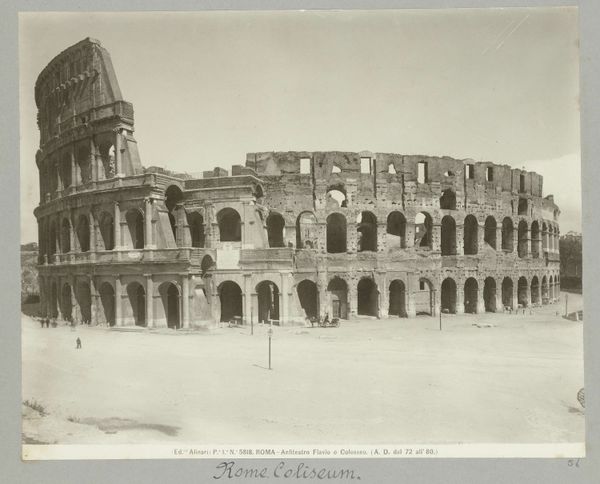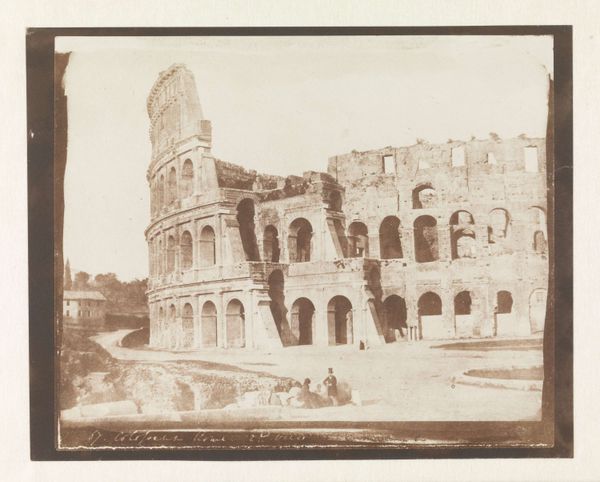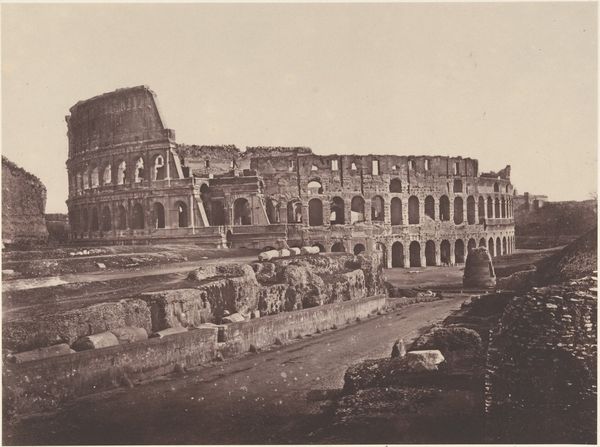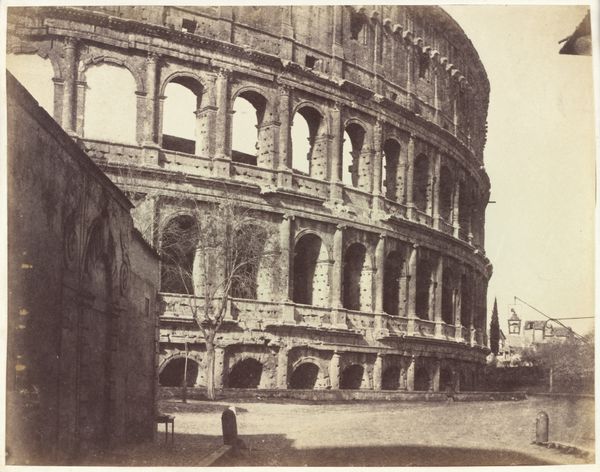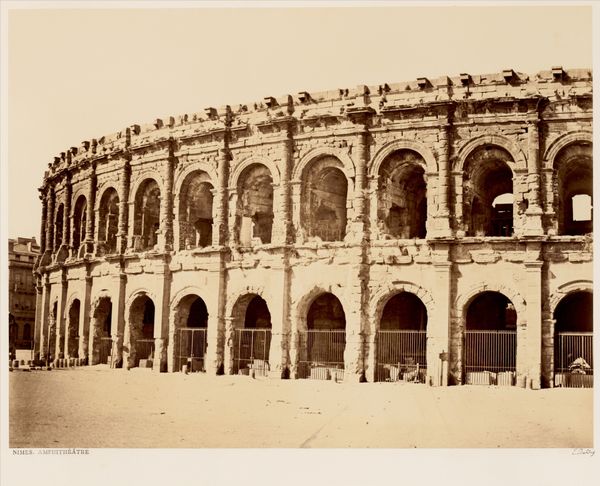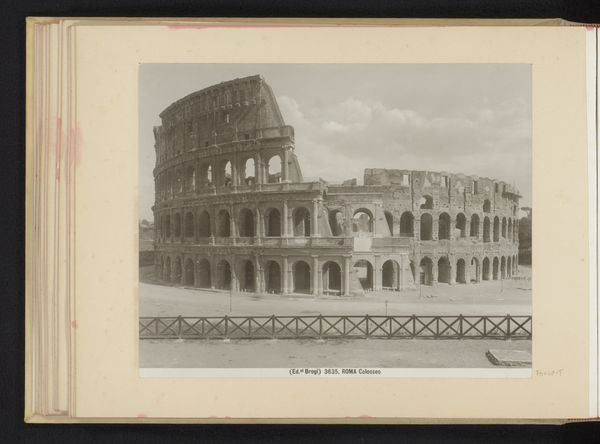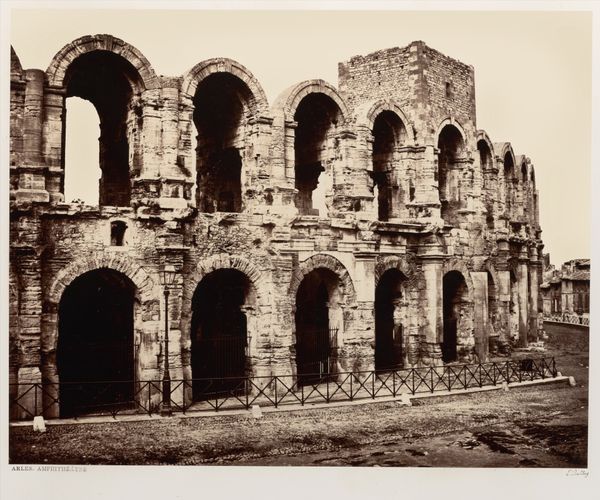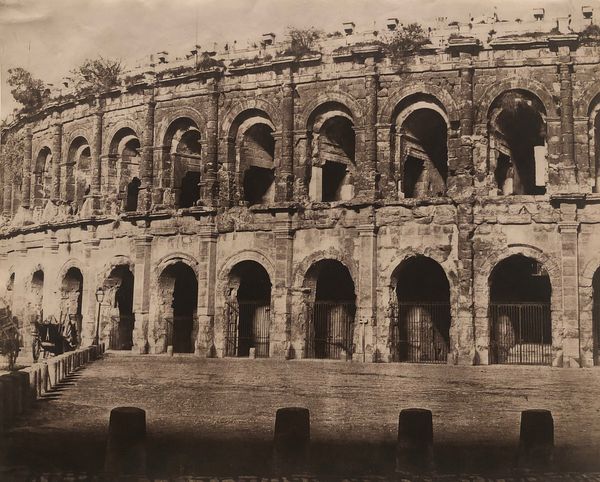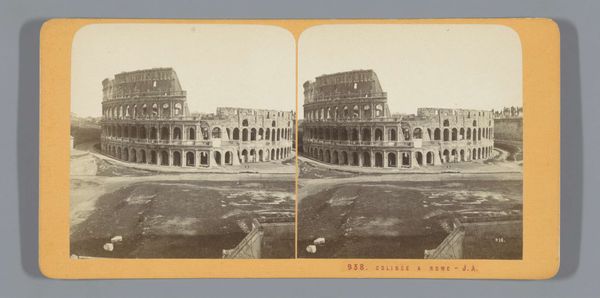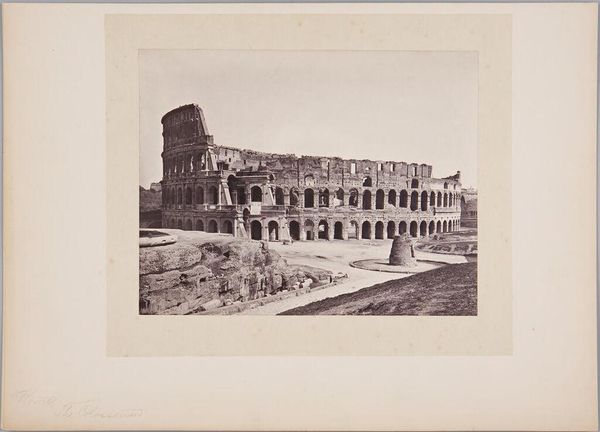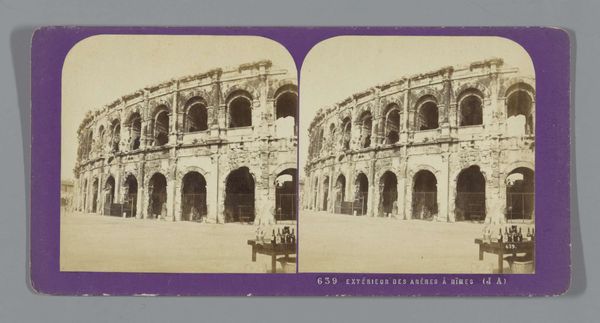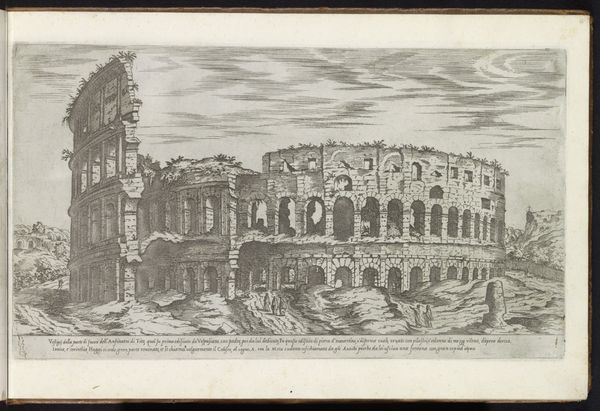
daguerreotype, photography
#
daguerreotype
#
photography
#
ancient-mediterranean
#
cityscape
#
realism
Dimensions: height 63 mm, width 104 mm
Copyright: Rijks Museum: Open Domain
Editor: This is “Exterieur van het Colosseum,” a daguerreotype taken sometime between 1857 and 1864 by Ludovico Tuminello. The sheer scale of the Colosseum is definitely impressive, but this photograph makes me think about the labor involved in building something this massive. What can you tell me about that aspect? Curator: This daguerreotype captures more than just the ancient grandeur; it offers a glimpse into 19th-century material consumption. Consider the stone itself: quarried, transported, carved, and assembled through immense physical labor. Now, think about the context: the burgeoning photographic industry. The production of the daguerreotype involved specific materials—silver-plated copper, mercury, iodine—and a skilled artisan's hand, Tuminello's, alongside his equipment. How do these elements—ancient stone and modern photographic technology—intersect in your view? Editor: I guess I hadn't thought about the photograph itself as a product in the same way as the Colosseum. It's easy to focus on the historical subject matter. So the choice to capture the Colosseum is, in itself, an act of consumption? A consumption of history, maybe? Curator: Precisely. And consider who consumed these images. These daguerreotypes became commodities. Tourists acquired them as souvenirs, reminders of their travels and encounters with ancient civilizations. This exchange demonstrates an interesting cultural transaction, where history and labor are distilled into a portable, collectible object. Doesn't the image itself become another layer in this accumulation of materials and experiences? Editor: It’s strange to think of something as grand as the Colosseum being reduced to a souvenir! Curator: It underscores how materials and their representations are tied to socioeconomic contexts. By thinking through production, circulation, and consumption, we begin to perceive this daguerreotype as more than a simple photograph. We begin to discern the interwoven layers of history, labor, and materiality. Editor: I see what you mean. Examining the means of production really helps unpack so many hidden layers of meaning!
Comments
No comments
Be the first to comment and join the conversation on the ultimate creative platform.
